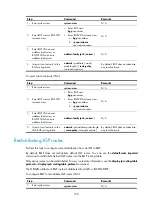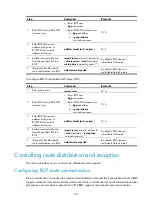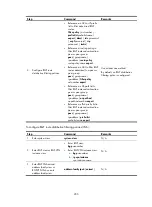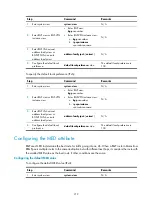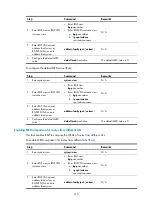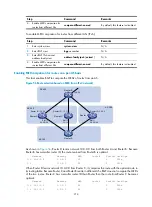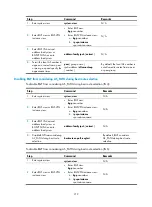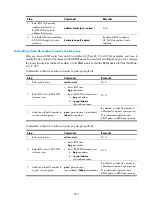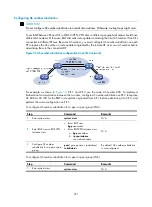
211
Step Command
Remarks
2.
Enter BGP view or BGP-VPN
instance view.
•
Enter BGP view:
bgp
as-number
•
Enter BGP-VPN instance view:
a.
bgp
as-number
b.
ip vpn-instance
vpn-instance-name
N/A
3.
Enter BGP IPv4 unicast
address family view or
BGP-VPN IPv4 unicast
address family view.
address-family ipv4
[
unicast
]
N/A
4.
Configure preferences for
EBGP, IBGP, and local BGP
routes.
preference
{
external-preference
internal-preference
local-preference
|
route-policy
route-policy-name
}
The default preferences for EBGP,
IBGP, and local BGP routes are
255, 255, and 130.
5.
Configure an EBGP route as a
shortcut route.
network
ip-address
[
mask
|
mask-length
]
short-cut
By default, an EBGP route has a
preference of 255.
To configure preferences for BGP routes (IPv6):
Step Command
Remarks
1.
Enter system view.
system-view
N/A
2.
Enter BGP view or BGP-VPN
instance view.
•
Enter BGP view:
bgp
as-number
•
Enter BGP-VPN instance view:
a.
bgp
as-number
b.
ip vpn-instance
vpn-instance-name
N/A
3.
Enter BGP IPv6 unicast
address family view or
BGP-VPN IPv6 unicast
address family view.
address-family ipv6
[
unicast
]
N/A
4.
Configure preferences for
EBGP, IBGP, and local BGP
routes.
preference
{
external-preference
internal-preference
local-preference
|
route-policy
route-policy-name
}
The default preferences for EBGP,
IBGP, and local BGP routes are
255, 255, and 130.
5.
Configure an EBGP route as a
shortcut route.
network
ipv6-address prefix-length
short-cut
By default, an EBGP route has a
preference of 255.
Configuring the default local preference
The local preference is used to determine the best route for traffic leaving the local AS. When a BGP
router obtains from several IBGP peers multiple routes to the same destination, but with different next
hops, it considers the route with the highest local preference as the best route.
This task allows you to specify the default local preference for routes sent to IBGP peers.
To specify the default local preference (IPv4):


